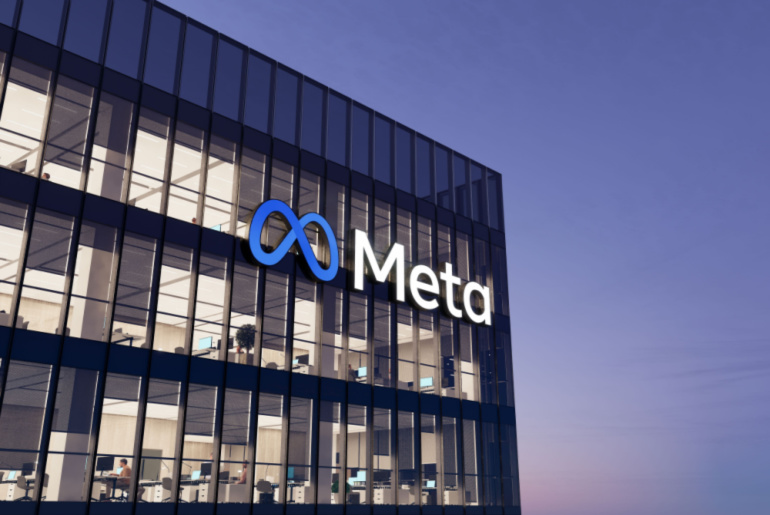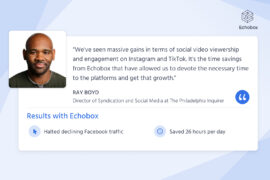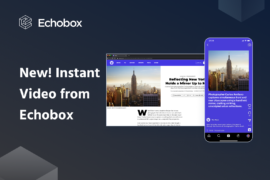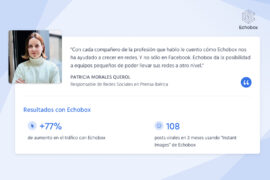In June of 2022, The Verge reported that an internal memo had circulated at Facebook, telling its staff to “make the app’s feed more like TikTok.” The news will come as little surprise to some; Facebook had seen its number of daily active users drop for the first time in its history in Q4 2021, whilst the average age of its users had crept slowly upwards. In July, Meta, Facebook’s parent company, announced another first: a year-on-year decline in revenue with further declines forecast for the next quarter.
This outcome represents the confluence of events largely outside of the company’s control — changes to Apple’s privacy policy, depressed ad market — but also speaks to a deeper structural problem with the platform and its demographics.
Facebook’s own research concluded that between 2019 and 2021 the number of teenagers using the platform dropped by 13% and this number was projected to drop even further to 45% by 2023. Meanwhile, TikTok has seen incredible growth, amassing over 4 billion users in half the time it took Facebook, and is particularly popular with the younger users that Facebook is struggling to attract.
Making Facebook more like TikTok is the remedy Mark Zuckerberg has prescribed for an ailing Facebook.
The implications of this change could be sizable for publishers, with the platform remaining the largest source of referral traffic of any social media site by some distance. Already, Facebook has announced that it will not be renewing exclusive deals with major US news publishers to host their content on its News Tab, while its Instant Articles format is also being discontinued.
These moves may reflect a wider shift in strategy by the company away from news content, at precisely the time that an increasing number of lawmakers around the world are beginning to propose legislation to force companies such as Facebook and Google to pay news publishers for the use of their articles.
So how have we arrived at this situation? What might a Facebook Feed more like TikTok actually look like? And what will it all mean for news publishers?
Is Facebook really moving away from news content?
Facebook is facing a battle on multiple fronts. At the same time as the company is having to weather a flood of PR disasters for the misinformation that is promoted on its network, Meta’s board has decided to play hardball with governments from Australia and Canada when asked to pay for content that is posted by news publishers on its platform.
It’s this context that informs Facebook’s current public position that publishers need it more than it needs publishers. Of course, the truth of the matter is that Facebook’s relationship with news publishers is symbiotic. Echobox CEO Antoine Amann sums up the situation this way: “News publishers’ content provides Facebook with a rich source of engaging, high quality, free content that keeps people on site longer. Facebook needs publishers as much as they need Facebook.”
But more than that, news content is valuable to Facebook because it is a uniquely rich source of information on user preferences. “Most news stories we read about Facebook’s ban on news content in Australia,” says Amann, “forget to mention a crucial point about Facebook: Facebook’s main business is advertising, and advertising only works if ads can be targeted. Targeting works best when user interests are collected, and there simply is no better way to collect user interests than from the news content users click on. If Facebook had persisted with the ban, they would have significantly hurt their main source of income.”
When a Facebook spokesperson told Axios that “most people do not come to Facebook for news,” they may be right, but the numbers that do are not to be scoffed at. As a 2021 report from Pew found, in the United States alone, almost a third of users regularly get their news from Facebook — over 70 million people.
It’s also true that the people who tend to consume news content on Facebook are older — the same demographic with the disposable income to purchase subscriptions and a good target for advertisers. According to the same Pew research, 63% of those regularly getting news from Facebook are between the ages of 30 and 64 with the average age of a paying subscriber to a news publisher being 47.
Facebook is therefore caught in a delicate balancing act of expanding its user base into a younger segment of the population, while at the same time maintaining those users it currently has.
All of this is in the news industry’s favor: an older audience is the predominant consumer of news content — a group who are probably less likely to move elsewhere for their news (although platforms like Instagram are growing in popularity). By keeping a “Feed” tab for friends and family and the pages that people actively follow, and creating a “Home” tab that will emulate TikTok’s “For You” feed, Facebook is hoping to maintain the user experience that appeals to its existing clientele whilst promoting the sort of content that younger users flock to TikTok for.
For the moment there is still uncertainty over what Facebook’s plans will look like in reality. But if we assume that TikTok-ifying Facebook mainly means the development of the Home feed then these changes may not have an outsized impact on publishers — the audience news publishers predominantly rely on and the “version” of Facebook that they use could well stay virtually untouched.
The Facebook algorithm(s)
Yes, we need to talk about algorithms. Algorithms are a fundamental part of what differentiates Facebook from TikTok and, because of this, how Facebook is seeking to evolve.
From its beginnings, Facebook has used algorithms to determine what it shows users — think of Facebook’s Feed algorithms. The sophistication of these algorithms, however, and the uses to which they are put, are continuously evolving.
You may well remember, for instance, in 2017 Facebook recommended mixing photo posts and link posts to improve the performance of content, which led to many publishers altering their posting strategy accordingly. Unfortunately, as our analysis showed, this didn’t prove to be the case, and many publishers who took Facebook at their word were hurt by substantial traffic decreases.
This episode highlights two things: first, the consequences of these changes don’t always reflect the intentions behind them. Algorithms are complex beasts whose exact workings are often a mystery, and so there is always enormous scope to produce outcomes that are unintentional if not undesirable.
Second, Facebook is continuously looking to change what content is surfaced to users based on judgments it makes concerning optimizing user experience.
Significantly though, these changes aren’t limited to relatively minor (though consequential) aspects of posting. On a broader scale, changes to the algorithms can be reflective of fundamental changes to the way Facebook wants people to act on the platform.
From “likes” in 2009 to “time-spent” in 2015 and “meaningful social interaction” in 2018, each change in the ranking signal Facebook wants to promote is backed and enhanced by changes to its algorithms, which in turn promote posts more likely to elicit the desired behavior.
What’s important to note is that Facebook has continuously tinkered with its algorithms from the very beginning, and publishers have always evolved with it. Regardless of which signals Facebook decides it wants to take as its own north star, well produced, quality content will always win out.
Using artificial intelligence to post to social media is a proven and cost effective method of insulating yourself from the brunt of these changes, with AI being able to continuously monitor what kinds of content are performing better and adapt. Beyond this, however, publishers already innovating in the short video format of TikTok or Instagram’s Reels have put themselves in a strong position to diversify their content and prosper, if for no other reason than cultivating the kind of operational flexibility that will stand them in good stead in the future.
So what about TikTok?
After a slow start, more publishers are beginning to explore the app and how it can be used to their benefit, with 2022 seeing significant follower growth on the platform from some of the biggest news publishers.
User growth on the platform has been astonishingly quick, with uptake especially high among the younger segments of the population. 41% of those classed as “Gen Z” (those born between 1997 and 2012) get news from TikTok, meaning that the next generation of readers are on the platform; and in order for publishers to connect with them, they have no choice but to be on there, too.
TikTok is also a valuable brand-building tool for news publishers, albeit one with a significant drawback. “The main problem with TikTok, from a publisher’s perspective,” says Amann, “is that it doesn’t drive traffic back to their website, because publishers can’t place links on posts.”
This is the scenario that many publishers dread: Facebook places greater emphasis on videos, decreasing the reach and visibility of text articles and making it more difficult to generate click-through traffic.
You may well be experiencing a sense of deja vu. Facebook’s previous “pivot-to-video,” based on seriously flawed metrics, resulted in a lawsuit from advertisers as well as layoffs at publishers who had gone all-in. With memories so fresh in the mind, publishers may be forgiven for being wary. What’s different this time? Well, for one, our own research suggests that videos are pretty popular. In our analysis, videos had a view rate (the percentage of users who saw a video appear in their feed and watched it for more than 10 seconds) of 12.5%. For comparison, the average CTR for link shares on Facebook is 2.5%. And perhaps more importantly, TikTok itself demonstrates just how popular video can be.
Compared to Facebook, the number of followers that news publishers have attracted on TikTok remains relatively small. ABC News, for instance, which has the largest number of followers of any news publisher on TikTok with 4 million, has 17.5 million followers on Facebook. But TikTok remains an alluring growth market, with the kinds of intimate first-person storytelling popular on the platform cheap to produce.
How does Facebook’s algorithm differ from TikTok?
It’s time to return to algorithms. One of the main points of differentiation between Facebook and TikTok is the way in which it models relationships between users and content.
Whatever changes Facebook makes to its recommender algorithms (and they’ve made a lot), they have always been underpinned by the social graph. The social graph is the representation of your online life, connecting you to people, places and topics of interest. “Facebook’s social graph connects all of the data it has on you,” says Simon Tanné, Echobox’s Head of Data Science. “The Facebook News Feed algorithm follows the logic of most standard recommendation algorithms: using the Social graph, it gradually builds up an internal representation of each user’s preferences. Whenever you log into Facebook and look at your Feed, it can then match new content against this internal representation to propose relevant content in a split second.”
Facebook’s social graph places a useful limitation on what you see in your Feed, because the content it can recommend to you is circumscribed by the pages, friends and groups you follow. Operating in this way helps to improve the accuracy of its recommendations.
This is not a limitation, however, that binds TikTok.
TikTok’s special sauce is its algorithm, which surfaces content in a fundamentally different way to Facebook. Instead of relying on who you follow to determine what content you should see, TikTok relies purely on opaque algorithms to serve up content without a user having to follow anyone; the single imperative on TikTok is to watch.
While the technology itself isn’t necessarily new, the sophistication of its algorithm and the accuracy of its recommendations is remarkable. A team in China has created a global entertainment phenomenon that proves uncannily good at recommending the right content to users in America or India, Brazil or Nigeria, in multiple languages, without any deep knowledge of specific cultural norms or expectations.
“This will be the challenge for Facebook’s new Home feed,” says Tanné: “creating an algorithm that can understand and recommend diverse content at a scale that is unimaginably large. And doing so for video rather than text.”
What does this all mean for publishers?
For publishers, the bottom line is that only those of us with a crystal ball can tell for certain what the changes Facebook is implementing will eventually look like. “It’s just too early to say what Facebook will do,” says Amann. “We don’t even know, for example, whether they’ll just add videos from third parties to the news feed, or if they’ll introduce a new format.”
If grafting a TikTok imitation onto its existing product is indeed the path that Facebook goes down, it will present opportunities for news publishers to expand their audience beyond those who actively seek them out. The fact that TikTok shows content without having to actively like a page removes a significant hurdle that could help smaller publishers gain brand exposure.
In the face of this uncertainty, many publishers are looking to diversify their revenue streams, with email newsletters a particular focus for many. “Right now,” Amann notes, “publishers are focusing on owning their audience as much as they can. Facebook and Google already won the ad game. By opening new sources of income and taking control of their own revenue streams and distribution, publishers are insuring themselves against changes to platforms that might harm their business. A scalable newsletters strategy gives publishers control and security, especially as Google’s third-party cookies are phased out.”
Publishers long used to contending with Facebook’s algorithms remain well placed to extract real benefits, with artificial intelligence offering an extra buffer. Through experimentation and innovation, publishers will weather these changes and thrive.



